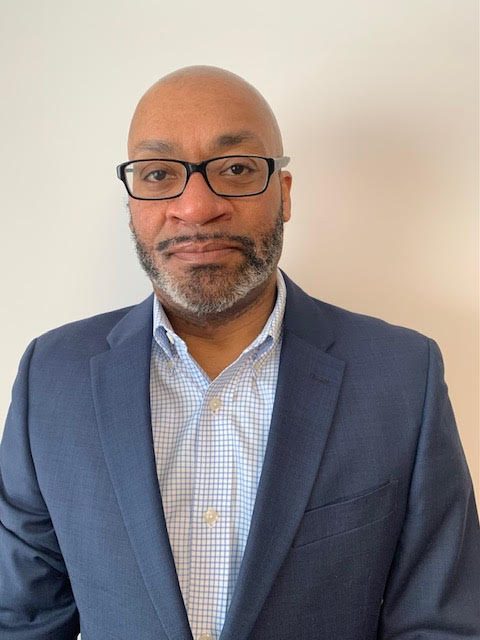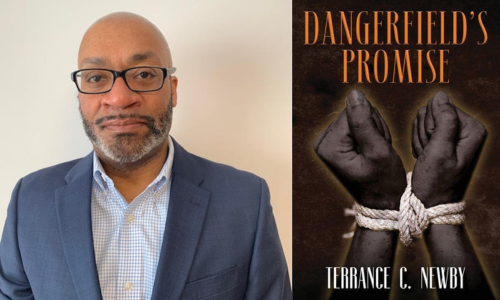Chicago Book Review’s Maria Yinks interviews Terrance C. Newby, author of Dangerfield’s Promise.
What was the most rewarding aspect of writing this book for you as an author?
While doing the research, I discovered that the historical figures in my story had very complicated real lives, in some cases lives that rival anything a fiction writer could create. This was rewarding and humbling, and it made me want to honor their experiences and their stories.
What advice would you give to aspiring writers who are interested in tackling historical fiction and complex themes like those found in your book?
First, make certain you have done the research and fully understand the verifiable historical facts that form the scaffold of your story. Then create characters who broadly fit into the scaffold, but use fiction and storytelling to fill in the myriad details that are unknown to history. This gives your story authenticity and originality.
What challenges did you face while writing this novel, and how did you overcome them?
The biggest challenge I faced was figuring out how to tell a story based on historical events that are very well known and have been meticulously documented by others who preceded me. Volumes have been written about John Brown’s raid on Harpers Ferry. More recently, historians have uncovered much about Dangerfield Newby’s life and his decision to join Brown’s raid, but there is much that can never be known. I decided that I would adhere to known history as much as possible, but use the novelist’s tools to fill in the blanks where appropriate. The challenge is adhering to known facts when necessary, but knowing when to create fiction to fill in the blanks. If you write a novel about the Titanic, you can create as many fictional characters and story lines as you like, but the boat has to sink..
Why did it take 15 years to complete this book?
I started working on this book in 2007. At that time, I had (and still have) a demanding full-time job as an attorney; three young children; and a full slate of domestic responsibilities. The writing went faster as my children aged, and I gained more confidence in my abilities. I published the book in 2002. I hope the next book does not take as long..
How did you conduct your research on the historical events and abolitionist movement depicted in the novel?
I started by conducting high-level internet research to get the 30,000 foot view. I then read “mainstream” sources discussing Brown’s raid, his planning, and his motivations. From there, I sought out and located out-of-print books from small historical societies (for example, the Jefferson County Black History Preservation Society). These more obscure sources provided vastly different perspectives on Brown’s raid, and the motivations of the raiders, from those found in mainstream sources. I then had the great fortune to discover a book written by Philip Schwarz, a history professor at Virginia Commonwealth University, that explored in detail the lives of Black Virginians, including the Newby families in Virginia and Ohio. This was an invaluable resource, along with written accounts provided by the National Park Service.
Were there any scenes or moments in the story that were particularly difficult or emotional for you to write?
There is a scene where Jericho, Harriet’s nine-year old son, is savagely beaten and then burned with a hot iron by his owner, Jennings. It took me two days to write and then contemplate how best to present a barbaric act of abuse against a nine-year old child.
How did you decide on the balance between historical accuracy and creative storytelling in your book?
When writing the Dangerfield story line, I adhered to known history as much as possible, and when doing so advanced the plot. I used fiction and creative storytelling to fill in the gaps and create characters that made the historical figures more interesting. The Dangerfield story line was built on a foundation of known facts. I invented the unknown back story of the characters. The Turner story line is easier — it is completely fictional.
What authors or works of literature have influenced your writing style or inspired you to craft this novel?
Toni Morrison, Jim Harrison, Cormac McCarthy, Gabriel Garcia Marquez. I have borrowed bits from all of them.
Can you share any moments during the writing process when you felt particularly connected to the characters or their struggles?
I sympathized with Henry when he realized that he could not buy his son out of slavery. Henry’s story was all too common for slave owners who wished to free their slaves, but could not afford to do so.
What do you hope readers will learn or gain from reading your novel, both in terms of historical context and personal growth?
That slavery, like every aspect of American history, was messy, complicated, and contained myriad families and relationships, some of which were remarkable for the love between the families and across racial lines.

Terrance C. Newby is at attorney, novelist, and playwright based in St. Paul, Minnesota. His plays The
Cage, The Body Politic, Reunion Forever, and The Piano Teacher have been professionally staged in Twin
Cities theaters.
Terry’s novel Dangerfield’s Promise was published in April 2022, and has received favorable reviews
from the Seattle Book Review, Manhattan Book Review, and the Midwest Book Review, among others:
“The book is a must-read for fans of classic historical narratives, like Django Unchained and 12 Years A
Slave. Plus, readers who enjoy magical realism will have their fill of thrills with the hair-raising ghost
appearances and intriguing visions. Told through multiple third-person perspectives, the book brings
different strong characters and times together in one grand, epic narrative that is perfect for a complete
escape from the mundane.
More information about Terry’s work can be found on his website, https://www.terrancenewby.com/
Terry can be reached by e-mail at terrynewby58@gmail.com

